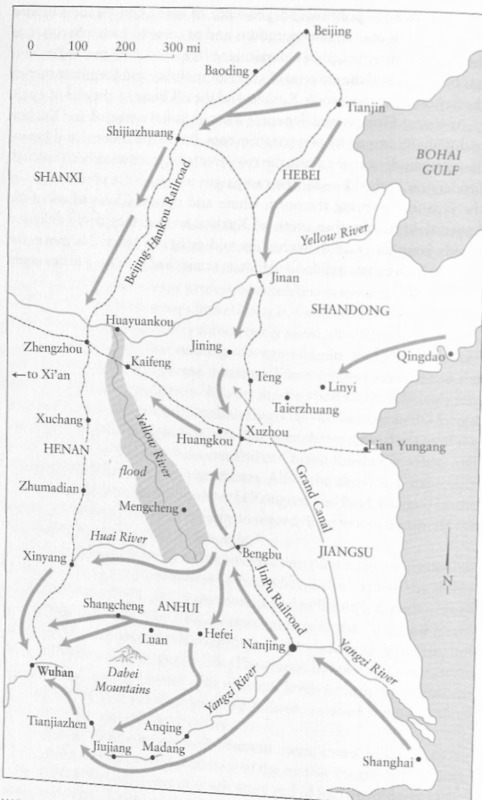Understanding the Yangtze Campaign
The battle for control of the central Yangzi region took place between January and October 1938. The prolonged struggle was useful at a national level but was very harmful to the cities involved. In general the Yangtze Campaign was a series of strategic retreats which led in towards Wuhan. Much of the campaign rested on mobility and controlling the oppositions mobility; for example, Japanese strategy involved blowing up dykes and fighting over railroad junctures. The Yangzi river was very high in the Summer of 1938 so Japanese could use this to help move troops. In June 1938 the attack on Wuhan itself began. On September 30, 1938 the Japanese controlled the railway north of the city and made an amphibous landing south of the city, thereby surrounding the city. On October 25, 1938 the city capitulated. The weakness in the strategy was perhaps never taking an offensive attack, soliders were instead stationed at the most defensible positions. Although this strategy may seem to be a wholly depressing series of events, certain battles were morale boosters and spirits were kept high.
Mackinnon, 2008. Wuhan, 1938: War, Refugees, and the Making of Modern China
